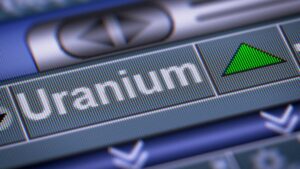Xanadu is on the trail of a copper elephant in Mongolia

Investors have been quick to recognise Xanadu's potential. Pic: Getty
If you want to hunt for elephants — including copper elephants — you have to go to elephant country.
That’s exactly what Xanadu Mines (ASX:XAM) has done in Mongolia where it looks to have bagged a prize to rival that of big-name hunters such as the legendary Robert Friedland and Rio Tinto.
US-born billionaire Friedland who played a key role in the development of the rich Voisey’s Bay nickel mine in Canada, and then the discovery of the giant Oyu Tolgoi copper mine in Mongolia which is now run by Rio Tinto.
Xanadu, which first went to Mongolia in pursuit of coal to ship across the border into power-hungry China, switched its focus to copper five years ago when it became clear that copper was a better bet than environmentally unpopular coal.
The switch is paying off on a number of levels.
Firstly, the price of copper — after slumping to around $US2 a pound early last year — has risen by 50 per cent to almost $US3/lb.
Secondly, Xanadu appears to have made a discovery that might one day rival Oyu Tolgoi.
It’s early days for Xanadu’s Kharmagtai project but international investors have been quick to recognise the potential of the company’s work, rushing to subscribe for shares in what was to have been a $10 million capital raising which became $15.4 million to satisfy demand.
The extra $5.4 million, raised at a price of 20c a share, was provided after Xanadu’s chief executive, Andrew Stewart, spoke at the Beaver Creek mining conference in the US State of Colorado, reportedly wowing the audience with exploration results from Kharmagtai.
The best drill intercept so far is a whopping 650 metre section assaying more than 1 per cent copper equivalent (a mix of copper and gold).
The really important point in that result is that it started at the surface and was exceptionally thick.
The type of mineralised system discovered by Xanadu is called a porphyry, a volcanic rock generally found in very large structures (elephants) with their size making even low concentrations of minerals economic to mine. That’s exactly what Rio Tinto is doing at Oyu Tolgoi, about 100 km south of Kharmagtai.
No-one is officially drawing a parallel between Kharmagtai and Oyu Tolgoi, yet.
But the location — in a region known to contain “mineralised elephants” — and the drill results which Xanadu continues to report, explain why North American investors have been quick to back the Australian-based company. They smell another Oyu Tolgoi.
A clue to rising interest lies in the share price which continued to move up even after last week’s issue of new capital with the stock adding 3c to 23c, perhaps filling buy orders from investors who failed to get everything they wanted in the 20c raising.
At its latest price Xanadu is up 35 per cent on where it was in mid-July, the point at which the market started to take seriously an exploration project which has already established a resource base of 1.5 million pounds of copper and more than two million ounces of gold.
Armed with funds from its latest capital raising, Xanadu has been able to retire all debt, including a loan from Hong Kong’s Noble Group, and plan a fresh drilling program that will focus on three primary targets: Kharmagtai and the nearby Red Mountain and Yellow Mountain prospects.
The next phase of drilling should provide more clues in helping unravel the nature of the geological structures discovered so far with the potential for a continuous multi-kilometre system comprising a series of porphyry structures.
In its latest exploration report Xanadu said it had found three new porphyry structures under cover at Kharmagtai.
An example of the type of structure under exploration is Target Three — a 650m by 550m site into which just two shallow holes have been drilled, with one returning 44m at 0.19 per cent copper and 0.27 grams of gold a tonne starting at a depth of 25m.
Target Four is described as a circular porphyry measuring 800m by 750m containing classic veining associated with porphyry structures with best drill results so far including 91m at 0.22 per cent copper and 26g/t of gold (for a copper equivalent grade of 0.39 per cent copper) from a depth of 30m.
For investors unfamiliar with the type of target being explored by Xanadu, the key to value lies in the shallow depth and the potentially vast tonnage of material which means grades down as low of 0.2 per cent copper can be considered economic.
While the location of Xanadu’s work is highly encouraging, the country is a risk with Mongolia occasionally behaving like most third-world countries with government having a bad habit of changing the rules as a project shows signs of success.
Rio Tinto spent years negotiating with the Mongolian Government before it was satisfied that it had a long-term working relationship.
Xanadu is yet to reach the government-negotiating stage with its work. That’s a risk to come after the risks of exploration, project design, funding and the near certainty that a company currently valued at $108 million will need a big partner to develop what could become a multi-billion dollar mine.
UNLOCK INSIGHTS
Discover the untold stories of emerging ASX stocks.
Daily news and expert analysis, it's free to subscribe.
By proceeding, you confirm you understand that we handle personal information in accordance with our Privacy Policy.








